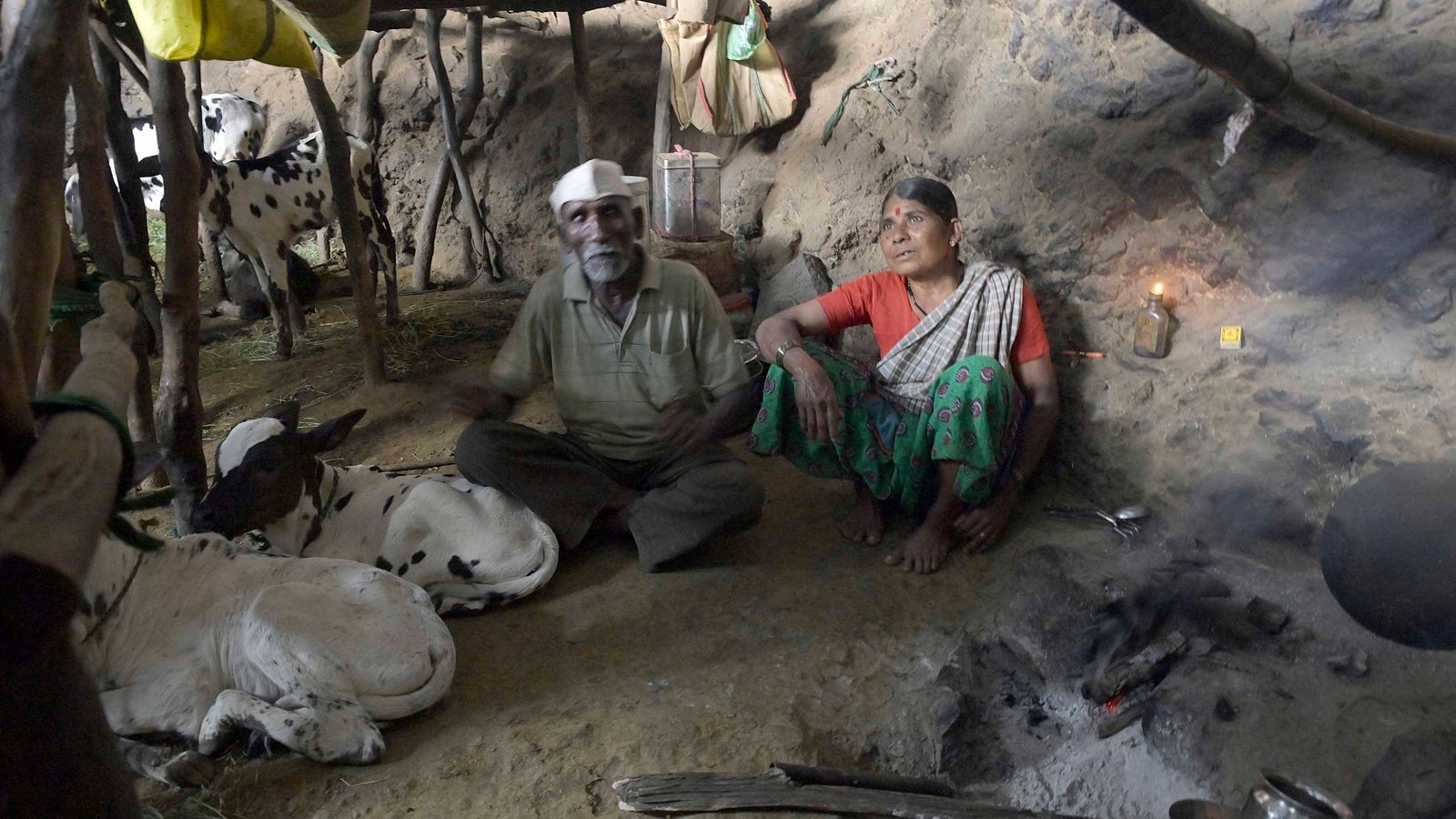For half the year, Vanita Madge lives in a home whose walls are the Sahyadri hills. The ceiling is of dark basalt and slopes on every side, demanding that one stoops accordingly. In the kitchen — which doubles as the sleeping space — crouching is the only way to move.
Madge’s home is a cave in the Sahyadri hills in Satewadi, in Akole block of Ahmednagar district. She shares the cave with her husband, father-in-law, two other families — and 150 heads of cattle, 50 of which belong to Madge’s family. The animals are the primary occupants of the cave, and the seven human inhabitants are there to look after them.
Madge’s family is among the few cattle-herding households in Satewadi and Phopsandi villages. With the rest of the village engaged in farm activity, cattle herders like them find little space to build sheds for their animals.
“We have cows, buffaloes and goats, among others. They live in the open during the dry months but, when it rains, it becomes difficult for us. We have to take the animals somewhere dry,” says Madge, who has studied up to Class 12.
So, for three generations now, Madge’s family has been spending the months between June and January up in the hills where the forest is thick with vegetation. A couple of the caves which dot the hilly landscape are home to cattle herders like Madge, with the permission of the forest department. “We don’t know who discovered the caves but we have been coming here every year,” says Madge.
“These cattle-herders have been permitted to live in the caves only during the rains. The rest of the year, the caves are empty. We have never had any problem with them,” says Pratibha Sonwane, Range Forest Officer, Wildlife Division, Rajur in Ahmednagar.
At present, there are four cattle-herding families living in two caves in the area. Their presence is marked by the clothes spread over the bushes to dry, steel utensils piled on rocks and a buffalo shed.
Story continues below this ad
 The caves in the Sahyadri hills in Satewadi, in Akole block of Maharashtra’s Ahmednagar district (Express/Pavan Khengre)
The caves in the Sahyadri hills in Satewadi, in Akole block of Maharashtra’s Ahmednagar district (Express/Pavan Khengre)
It is a short but arduous climb to the cave. The mouth of the cave is fortified with fences and cow dung cakes to keep out the winds during thunderstorms. Inside, bamboo poles mark out the sections for animals, with cows and goats often living as neighbours. A battery-operated diya is the only source of light.
A thin black pipe channels water from a nearby waterfall. “The pipe carries water from the waterfall above the cave and we use it for drinking, washing and everything else,” says Hemlata Bhadumuthe, Madge’s sister who is studying in Class X.
The forest abounds with foxes, snakes and deer but these do not come near the cave. Rats, however, have no qualms. “We have a cat to kill the rats,” says Jhumrabai Muthe, who lives in the cave with her husband Namdeo Muthe.
Over generations, the three families have perfected their living arrangements and, after the cattle have been tied in the evening, they get together to watch the Marathi TV series Constable Manju on a smartphone.
Story continues below this ad
“It is a struggle for the cattle-herders because they do not have space for the animals in the village. Since the caves provide shelter for the animals, the herders live there, though the place is without electricity and basic amenities,” says Vinayak Wadekar, an experienced trekker from Sangamner.
Everyday, the animals are taken to the forest to graze in the morning and evening. Every morning, the milk is carried down to the village, which is an hour away, to be sold. This is when the families also visit their homes to charge the batteries of their phone and diya.
“We have a pucca house in the village, where my two sons and other families are living,” says Madge. When the boys come to the cave, the main instruction is not to go out after dark. “There is fear outside,” says Madge, giving a glimpse of humanity’s age-old struggle with the wilderness at night.
The landscape, too, claims its sacrifice. “All too often, a cow will slip down the mountain slope… I cried a lot when that happened recently. My husband dug a grave and we buried it,” says Madge.
Story continues below this ad
But, she says, she will forget the grief on Diwali, and make puran poli to celebrate the festival of lights in the dark cave.




